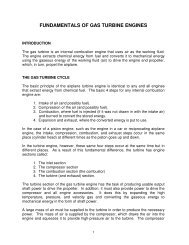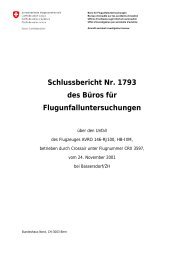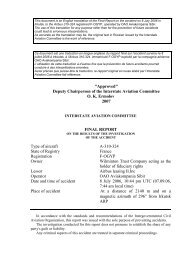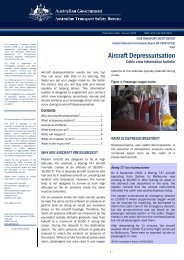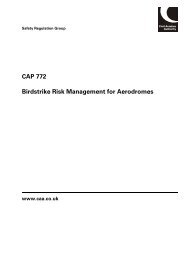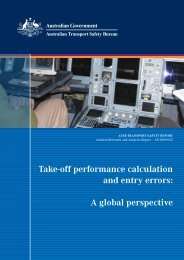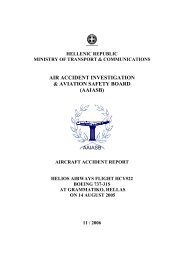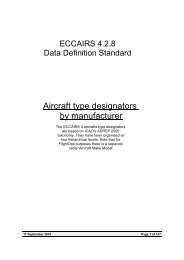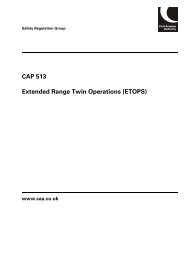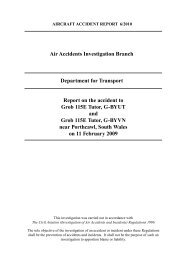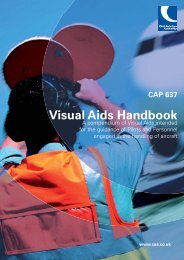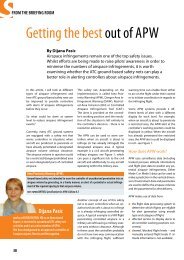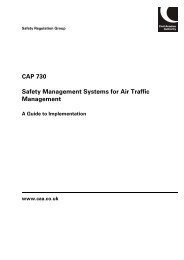View this book - SKYbrary
View this book - SKYbrary
View this book - SKYbrary
Create successful ePaper yourself
Turn your PDF publications into a flip-book with our unique Google optimized e-Paper software.
wheel was in the air and the main landing gear was just becoming airborne. The captain advised ATC of the event, and was cleared to land.<br />
After advising ATC, the flight crew performed left traffic for runway 18L, landed, and taxied to the gate without further incident. The captained observed no<br />
change in engine performance or flight characteristics during or after the event. He added that the birds were small and brown, with white spots.<br />
A review of the flight data record revealed that approximately 1 second after the airplane's main landing gear transitioned from ground to flight, the N1 on the<br />
left engine dropped from 81.88 percent to 56.00 percent, and the right engine dropped from 81.25 to 71.63 percent. In both cases, throttle positions remained<br />
constant. In addition, pitch was 19.16 degrees nose up, and airspeed was 152.5 knots at the time of the event.<br />
Examination of both engines by the operator, revealed damage to the first stage of the compressor sections on the number 1, and number 2 engines. The section<br />
were changed, and the aircraft was returned to service.<br />
On February 23 and 24, 1999, a Federal Aviation Administration Wildlife Biologist examined the airport operations area (AOA). In his report, he wrote, "The<br />
starlings [Sturnus vulgaris] involved in the strike appear to have been a random foraging flock. Careful inspection of the area where the starlings were just prior<br />
to the strike did not reveal any anomalies or anything remarkably different from virtually every other grassed area within the AOA."<br />
He continued, "It is difficult to say with any degree of certainty whether or not the starlings involved in the strike had been roosting in the terminal area trees.<br />
In that part of the country, starlings will form large winter roost wherever they can find suitable habitat conditions. Some winter roost can contain several<br />
million birds. Winter roosting starlings will fly up to 50 miles (one-way) daily to feed. The starlings involved in the strike could have come from the terminal<br />
roost area or they could have come from a roost many miles from the airport."<br />
The FAA publication titled Hazardous Wildlife Attractants On Or Near Airports, states that "All species of wildlife can pose a threat to aircraft safety." In<br />
addition, it stated that starlings comprised 5 percent of all damaging animal strikes to U.S. aircraft from 1993 to 1995.<br />
The National Transportation Safety Board determines the probable cause(s) of <strong>this</strong> accident as follows.<br />
A flock birds were ingested into both engines, resulting in substantial damage to the engines.




